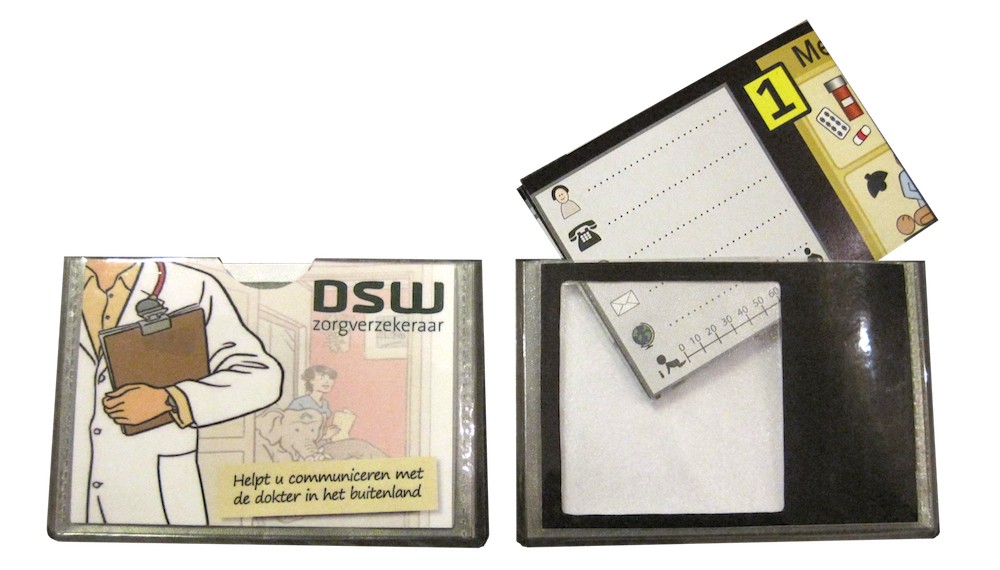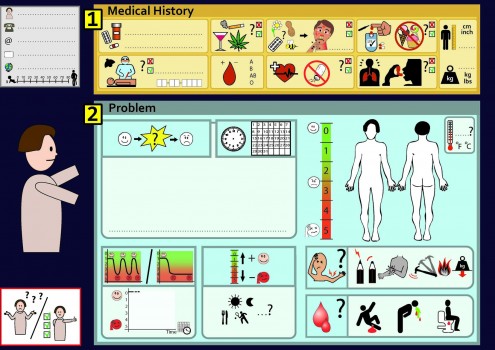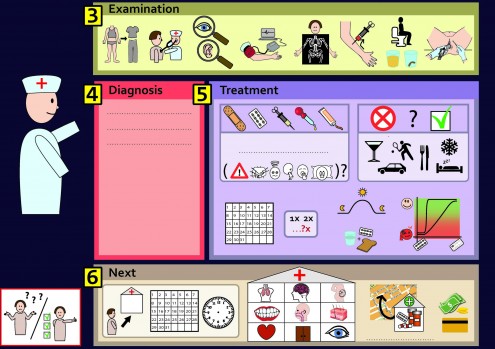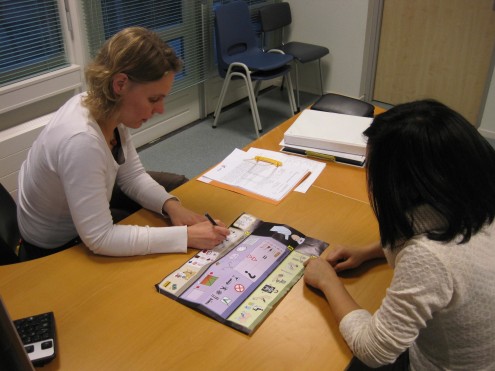By: Anita van Schie
Keywords: Health insurance, Travel, Smooth, Involved
Final presentation poster: Click here
Design Goal and Interaction vision:
Design goal: I want to enable travelers to communicate with foreign doctors in a satisfying way.
Interaction vision: By letting the conversation feel like a smooth team achievement.
Research Explorations:
The goal of the first research was to find out which problems or negative situations occur when visiting a doctor abroad and how they evolved. I used interviews, context mapping and a survey and participants were people who had experience with going to a foreign doctor and Dutch health care workers who had experience with foreign patients.
Most interesting result were that many people indeed had a lot of problems communicating to the doctor. They had not prepared for it or thought they would manage, but actually felt really uncomfortable at the doctor feeling not in control resulting in not trusting the medicine or treatment they had gotten.
I was surprised to find that doctors never seemed to use any extra tools to improve the communication. Talking to Dutch doctors I learned that they are often very busy and just do not have time to try to translate everything and feel it is the patients responsibility to be able to explain their problem.
Design Explorations:
Throughout my project I made different prototypes. Every prototype I tested with users and compared the results with my interaction vision. When they did not match, I improved the concept, made a new prototype and tested it again.
Findings with the first concepts showed for instance that only one user was in control of the conversation (patient ór doctor) instead of creating a feeling of teamwork, or that there was no clear structure in the pictures resulting in an overload of information instead of a smooth and quick conversation. Throughout all the user tests the pictures themselves were improved on clarity and the choice of important pictures was also based on the comments of doctors.
Final user testing at the SGZ in Delft with a real doctor and real patients, showed that the final concept did really help the users to communicate and creating the right type of interaction: a smooth team achievement.
Final Design:
The final design is a communication tool. It is a poster with (medical relevant) pictures. When users travel abroad and unexpectedly need to visit a foreign doctor, they can use this poster to help them communicate. On the front side are pictures which can help the patient explain his problem to the doctor and communicate his relevant medical history.
This can be done by drawing on the poster, pointing at the pictures and use this to strengthen play acting. On the backside are pictures that can help the doctor explain what he is going to examine and what the diagnosis and treatment are. The pictures are structured in the natural order of the consult which helps to guide the users through the conversation in a smooth and quick way.




